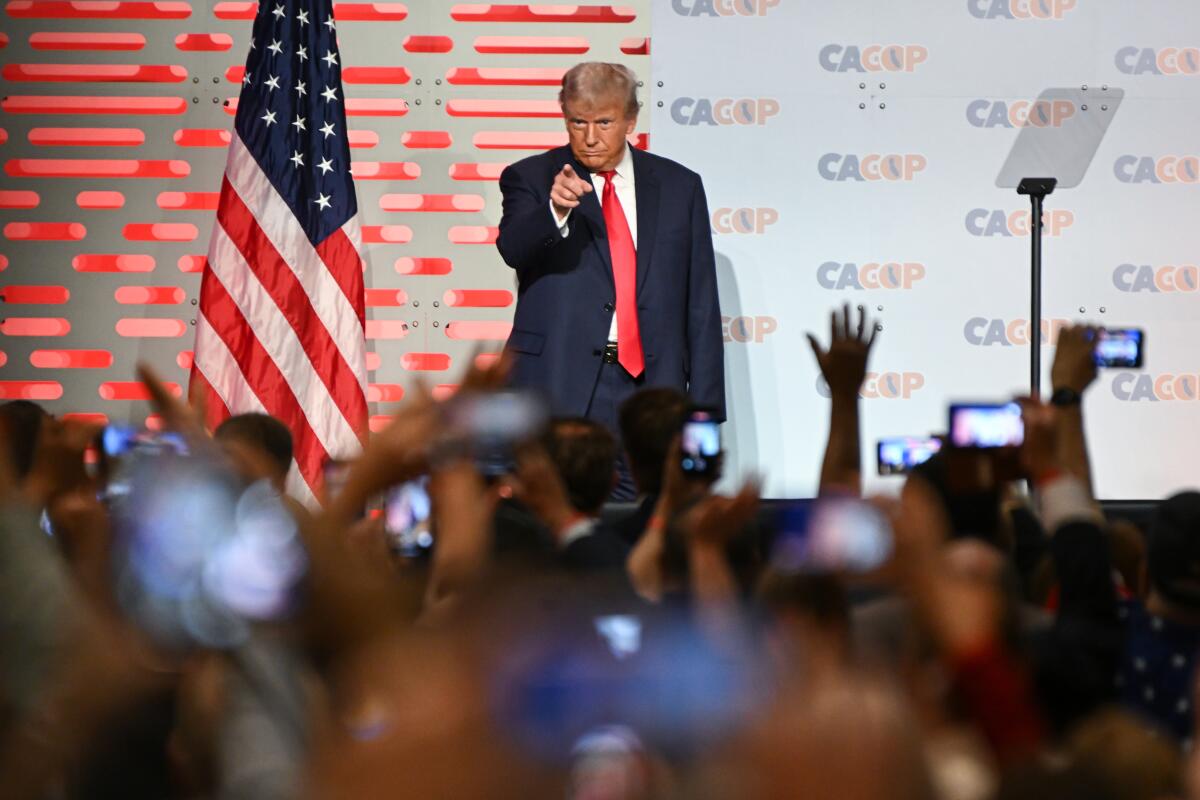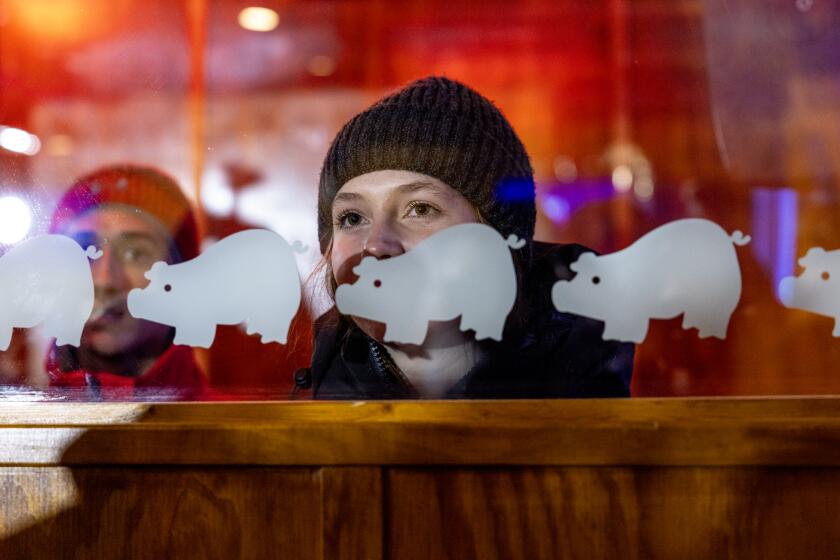Stop the nonsense. Moving up the California primary was a dumb idea. Push it back

- Share via
SACRAMENTO — California’s early primary election needs to change. March 5 is too late to influence presidential races — and way too soon for non-presidential contests.
In fact, the whole presidential nominating process begins far too early with a hyped caucus and primary in pipsqueak states — Iowa and New Hampshire — that this year were duds.
After all votes are counted in the premature Super Tuesday behemoth in 15 states, including attention-hungry California, there will be no semblance of a nominating contest in either party with several months remaining before the Democratic and Republican national conventions.
President Biden and Donald Trump will have virtually locked up their nominations, a November face-off that inspires hardly anyone.
Granted, this is a unique election year.
There’s an 81-year-old president running who shouldn’t be. It’s not that Biden is too old to handle the job. Rather, it’s that millions of people think he is. Many may withhold their votes in November, anointing the despicable Trump.
Trump has legions of worshipers, despite his being the all-time sorriest poor loser in American history, a guy who tried to overturn an honest election, even by motivating a deadly ransacking of the nation’s Capitol. Not to mention he’s a habitual liar who was judged to have committed financial fraud and has been indicted on 91 felony counts. And that’s the short list.
A delayed nominating process would have given Biden more time to consider whether to bow out and become that “bridge to the next generation” he promised four years ago.
And later primaries would have provided additional time for crud to fall on Trump’s head, giving Republican voters an opportunity to come to their senses.
All right, maybe that’s fantasy. But the early primary for California is a nightmare.
Iowa has 8% of California’s population and is far less representative of the nation’s diversity, age and economy. Yet Iowans have vast influence over presidential campaigns.
We should return to our traditional, comfortable June primary, at least for congressional and state races.
Under California’s latest concoction, there will also be early March primaries in non-presidential years — such as 2026, when a new governor will be elected. There will be elections for all statewide offices and — as with this year — for legislative and congressional seats.
That means there will be eight months between the primary and the November face-offs — far too long a time for general election campaigning. And the primary period is too short.
“If candidates in down-ticket races had more time [in the primary] to develop messaging, it would help voters have a clearer picture,” says Marty Wilson, chief political strategist for the California Chamber of Commerce. He favors returning to a June primary.
Democratic strategist Steve Maviglio calls that argument “a bunch of hooey. If you want to know what’s going on, you’ve got plenty of time.”
But most voters have other things on their minds. It seems like just yesterday they took down the Christmas tree. Now they’re agonizing over income tax reports due next month.
With an early primary, congressional and legislative candidates need to start campaigning after Halloween.
“During the holiday period, voters are celebrating. They’re not very receptive to being pounded over the head with campaign ads,” Democratic strategist Garry South says.
Some background for context:
Before World War II, California had a sensible two-primary system — a presidential primary in May and a state primary in late August. But during the war, we switched to a “consolidated” primary because it was too difficult to send ballots to troops around the world. This soon became the traditional June primary that lasted five decades.
It worked great. California occasionally even exerted presidential clout back when races began later.
In June 1964, Barry Goldwater won the Republican nomination in a landmark primary that permanently turned the California GOP from centrist to conservative. In June 1972, George McGovern captured the Democratic nomination because he won the hotly contested California primary.
California’s primary election takes place on March 5. Read up on the races in L.A. city, L.A. County and other areas.
But afterward, the parties — especially Democrats — got “reform” happy and junked California’s winner-take-all primaries, devaluing their importance. Convention delegates were basically parceled out in proportion to a candidate’s vote. So there was less incentive for candidates to wage highly expensive, all-out campaigns here if they weren’t going to reap the entire bundle, the largest cache of delegates in the nation.
The GOP — bowing to front-runner Trump — has returned to a winner-take-all primary this year. A candidate who wins more than 50% of the vote collects all 169 delegates. That has made California’s primary less interesting than it could have been because Trump is expected to gobble up the whole bunch without real opposition.
Democrats have stuck with their convoluted delegate allotment system. Democratic strategist Bill Carrick thinks they should return to winner-take-all.
“It would be more attractive to candidates and make the state more influential,” Carrick says.
Desperate for influence and envious of peewee states that have it, California has tried various early primary schemes since 1996. Initially I cheered the idea. Now I’m booing. The coveted clout has remained elusive.
“California gets caught in Super Tuesday and we become nothing — a nonentity,” says political analyst Tony Quinn. “Two primaries makes the most sense.”
That’s the logical system: an “early” presidential primary — on a Super Tuesday in April or May — and a June primary for state races.
Democrats squawk that two primaries would cost too much. But they never object to any spending they like. What Democrats really fret about are low voter turnouts in June during non-presidential years. Low turnouts generally hurt Democrats.
OK, so let’s just move the whole shebang back to June. March is lousy for a state primary.
More to Read
Sign up for Essential California
The most important California stories and recommendations in your inbox every morning.
You may occasionally receive promotional content from the Los Angeles Times.
















